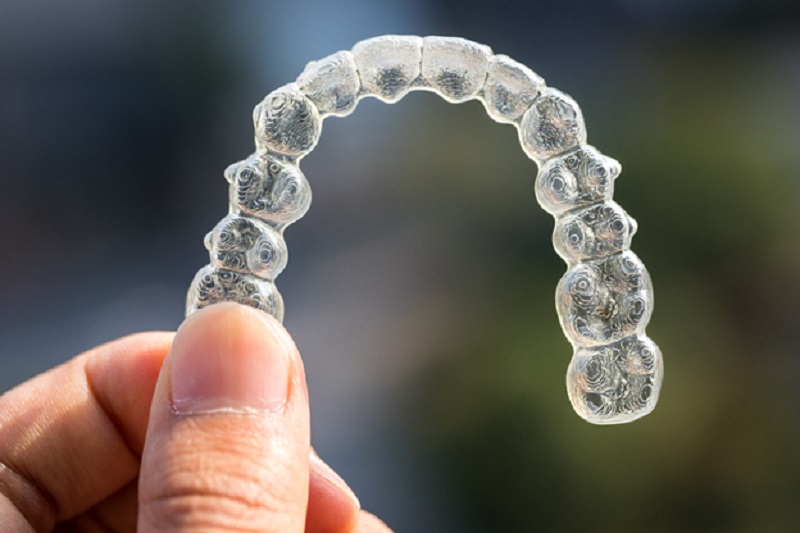We’ve all heard the stories and perhaps even experienced it ourselves – the discomfort, the visibility, and the lengthy commitment that often comes with traditional braces. Let’s face it, whether you’re an adult looking to perfect your smile or a parent seeking options for your child, the traditional route can be less than appealing. It’s not just the metal brackets and wires; it’s also about the lifestyle changes you need to make, from dietary restrictions to the constant dental visits. While braces are highly effective for a wide range of orthodontic issues, they aren’t necessarily the right choice for everyone. And why should they be? It’s the 21st century, and technology has evolved with Invisalign in Plymouth. So have options for straightening your teeth.
The advancements of dental technology
So, what exactly has changed in the world of dental healthcare? Over the years, technology has taken giant leaps, transforming numerous medical fields, and dentistry is no exception. Advanced imaging techniques, materials, and even telehealth capabilities have broadened our horizons. It’s not just about making processes faster or more efficient; it’s about expanding the realm of what’s possible.
One of these advancements includes clear aligners, a revolutionary treatment option for misaligned teeth. Other options such as lingual braces, which are braces placed behind the teeth, or removable appliances, offer similar benefits. Each of these options varies in cost, duration, and effectiveness, but they all share one common goal – to give you a straighter, healthier smile without the evident downsides of conventional braces.
Clear aligners: a transparent revolution
So let’s delve into the world of clear aligners, one of the most popular alternatives to traditional braces. Made from medical-grade plastic, these aligners are virtually invisible when worn. You receive a series of custom-made aligners designed to slowly move your teeth into their desired positions over time. And the best part? These aligners are removable, allowing you the freedom to eat whatever you like and maintain an efficient oral hygiene routine.
It starts with an initial consultation where the dentist or orthodontist assesses your teeth and discusses your goals. They take impressions or digital scans of your teeth, which are then used to create a 3D treatment plan. You get to see a virtual model of how your teeth will move over time, which is rather fascinating.
Once your aligners are ready, you’ll wear each set for about two weeks before moving on to the next in the series. Periodic check-ins with your provider ensure that everything is progressing as it should. And these appointments can often be virtual, making the process even more convenient.
The less known alternatives
While clear aligners are stealing the limelight, there are other, less-known alternatives worth considering. Lingual braces, for instance, operate on the same principle as traditional braces, but they are attached to the back of the teeth, making them invisible to others. Though they can be slightly uncomfortable at first, most patients report getting used to them relatively quickly.
Another option, particularly for minor adjustments, are removable appliances like retainers or palate expanders. These are generally used for simpler cases or as follow-ups to more comprehensive treatment. They allow a certain degree of freedom and are generally less intrusive than traditional or lingual braces.
Considering costs and insurance
Of course, financial considerations are often a big part of the decision-making process. Generally speaking, clear aligners and lingual braces can be more expensive initially than traditional braces. However, when you factor in the costs associated with more frequent orthodontist visits and potential emergency visits for broken wires or brackets, the overall financial picture may become less clear-cut. It’s also important to note that many dental insurance plans now cover some of the cost for alternative treatments, just as they would for traditional braces.
Additionally, some providers offer payment plans and financing options, making it easier for patients to access the treatment they prefer. It’s always a good idea to consult with your insurance company and prospective healthcare providers to understand all the potential costs involved.
The road to a brighter smile
The journey to a straighter, healthier smile is not just an aesthetic one; it has tangible benefits for your oral health as well. Properly aligned teeth are easier to clean, reducing the risk of gum disease and cavities. They also ensure better bite and jaw alignment, which can alleviate issues like TMJ disorders or sleep apnoea in some cases.
Your smile is a significant aspect of your personality, an integral part of how you present yourself to the world. If you’ve been held back by the thought of enduring years with traditional braces, know that today’s options are diverse, less intrusive, and highly effective. Take the first step. Consult your dentist or orthodontist to explore these alternatives and see what suits you best. It might just be the decision that transforms your smile – and your life.



